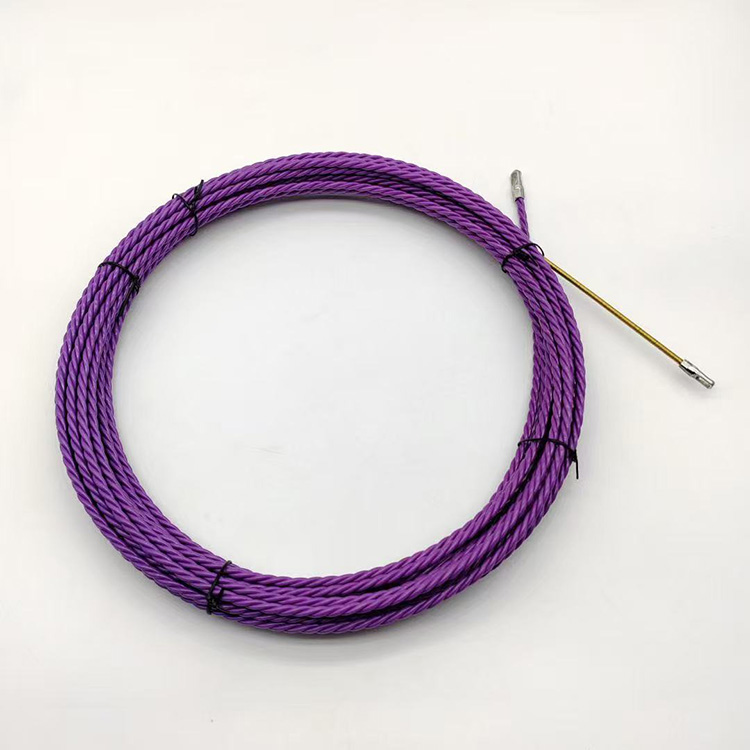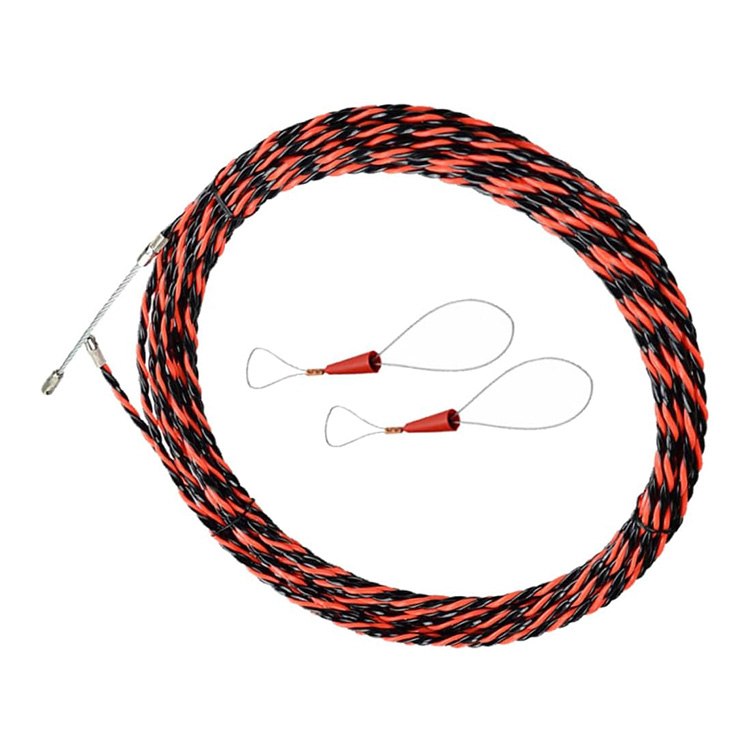10 Reasons to Use a Polyester Cable Puller for Electrical Work
Author:jiujiu Release time:2025-11-14 11:30:56 Number of views:98order
For anyone involved in electrical wiring or infrastructure projects, pulling cables efficiently and safely is critical. Among the many options available, the Polyester Cable Puller has become the go-to solution for professionals who value strength, flexibility, and consistent performance.
This article highlights ten convincing reasons why electricians and engineers continue to rely on the Polyester Cable Puller for a wide range of installations—and why it remains a standard product from reputable manufacturers with proven production expertise.


1. Exceptional Strength Under Tension
Engineered from high-tenacity polyester fibers, the Polyester Cable Puller provides remarkable tensile strength while maintaining structural stability. It can handle significant loads without snapping or deforming, making it ideal for heavy-duty electrical and telecommunication projects.
2. Lightweight Yet Durable
Unlike metallic ropes, polyester versions are lightweight and easy to transport. Installers can move and manage them quickly on site without sacrificing durability, improving both safety and work efficiency.
3. Non-Conductive for Electrical Safety
Because polyester is a synthetic, non-metallic material, it offers natural electrical insulation. Using a Polyester Cable Puller helps protect workers from electrical hazards, especially in energized environments or confined spaces where safety is paramount.
4. Corrosion and Moisture Resistance
Exposure to rain, humidity, or chemical environments does not degrade polyester fiber. This corrosion resistance gives the Polyester Cable Puller a long service life—even when stored outdoors or used in damp industrial locations.
5. Minimal Stretch for Stable Control
During pulling operations, precise control matters. Polyester’s low elongation ensures consistent tension, reducing cable bounce and preventing insulation damage. Electricians gain smoother pulls and predictable cable behavior throughout installation.
6. High Abrasion Resistance
When cables move through conduits, rough edges can wear down ropes quickly. The tightly woven polyester structure resists abrasion far better than most alternatives, keeping its integrity after repeated use.
7. Flexible Handling and Easy Storage
Flexibility is another major advantage. Even after repeated pulling cycles, the Polyester Cable Puller remains soft, pliable, and easy to coil. It does not kink or stiffen, which means quicker setup and cleanup between jobs.
8. Cost-Efficient and Reusable
Because it resists wear and environmental degradation, the Polyester Cable Puller delivers long-term value. Installers can reuse the same rope across multiple projects without losing strength, reducing overall replacement costs.
9. Adaptable to Various Applications
From residential wiring to industrial power networks, this pulling tool adapts easily to different environments. It performs equally well in underground ducts, high-rise conduits, or manufacturing facilities that require repeated cable replacement.
10. Manufacturer Quality and Consistent Production
A professional manufacturer ensures every Polyester Cable Puller meets precise specifications for strength and performance. Advanced production lines use controlled braiding techniques and load-testing systems to maintain uniform quality.
Such large-scale production capability also enables steady bulk supply, ensuring contractors and distributors receive dependable tools for demanding projects.
Maintenance Tips for Extended Performance
To maximize rope life and maintain reliability:
1.Clean dirt and debris after each use.
2.Store in a dry, ventilated area away from UV light.
3.Inspect for wear or fraying before each operation.
4.Avoid contact with sharp edges or chemical solvents.
Following these steps helps the Polyester Cable Puller retain its strength and performance for years of safe service.
Conclusion
The Polyester Cable Puller combines durability, safety, and efficiency—qualities every professional electrician values. Its strong fiber construction, resistance to harsh conditions, and user-friendly handling make it indispensable for cable installation and maintenance.
Selecting a tool from a reliable manufacturer with verified production capacity ensures consistent performance, technical accuracy, and timely bulk availability.
For anyone seeking a proven solution to streamline electrical installation, the Polyester Cable Puller remains the most trusted and cost-effective option on the market.
References
GB/T 7714:Horigome A, Endo G. Basic study for drive mechanism with synthetic fiber rope–investigation of strength reduction by bending and terminal fixation method[J]. Advanced Robotics, 2016, 30(3): 206-217.
MLA:Horigome, Atsushi, and Gen Endo. "Basic study for drive mechanism with synthetic fiber rope–investigation of strength reduction by bending and terminal fixation method." Advanced Robotics 30.3 (2016): 206-217.
APA:Horigome, A., & Endo, G. (2016). Basic study for drive mechanism with synthetic fiber rope–investigation of strength reduction by bending and terminal fixation method. Advanced Robotics, 30(3), 206-217.







